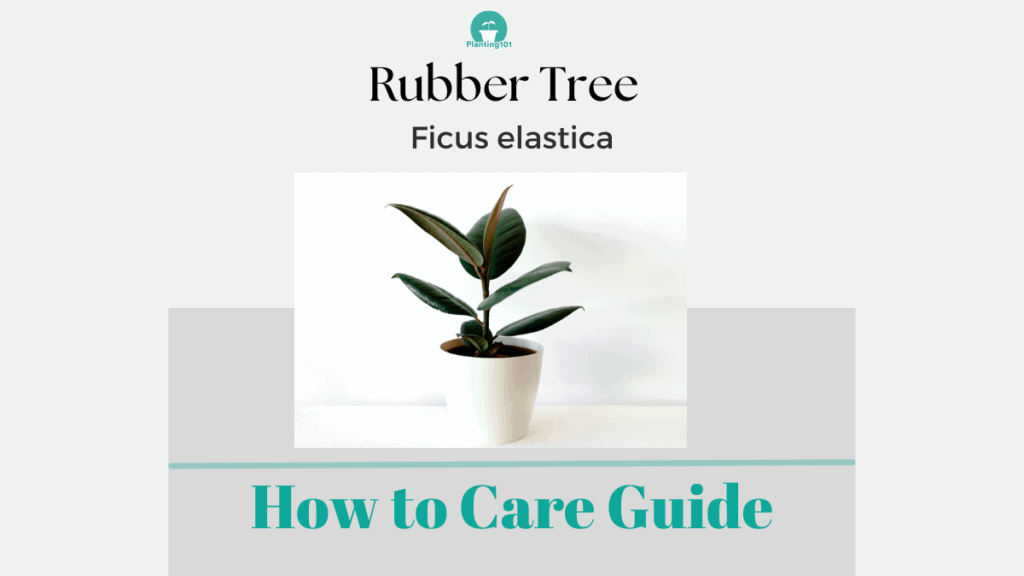Rubber Tree Plant (Ficus elastica) is a very popular houseplant known for its large, glossy, oval leaves. It makes a bold impact as a centerpiece plant in interior spaces. Your Rubber Plant can get big (it is really a tree) when kept as a houseplant. Your Rubber Plant can grow to 12 feet tall but it can take years. There are several varieties of Rubber Plants, from variegated to reddish foliage. Here is a guide on how to take care of your Rubber Plant. Below is a video of how to care for your new Rubber Tree.
Rubber Tree Plant Infographic
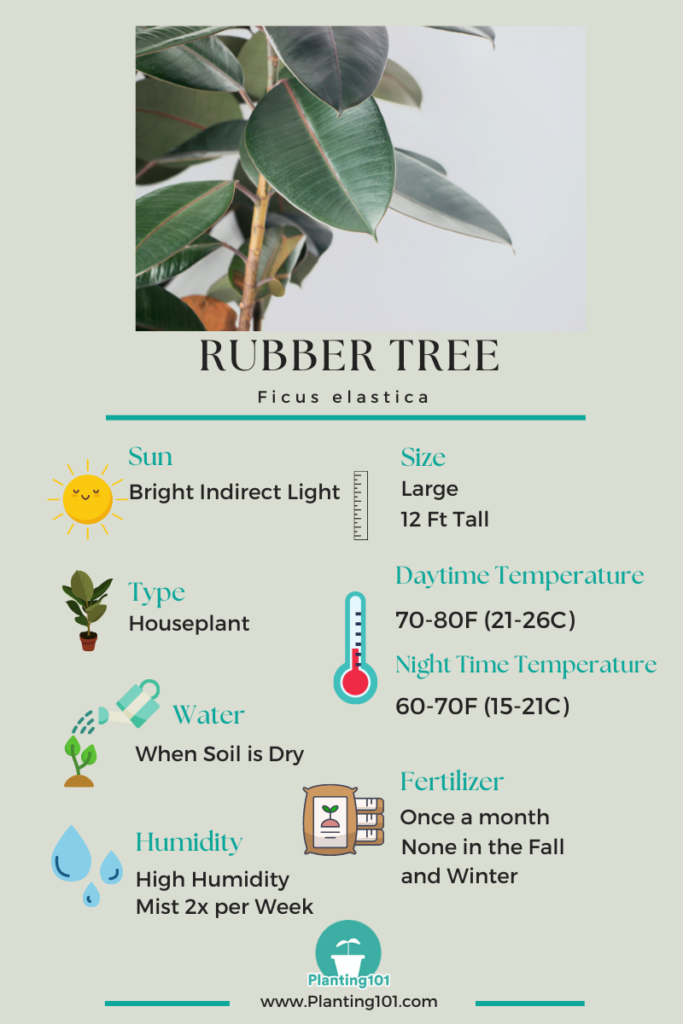
Rubber Tree Plant Basics
| Name | Rubber Tree Plant |
| Scientific Name | Ficus elastica |
| Light | Bright Indirect Light |
| Daytime Temperature | 70 to 80 F (21-26C) |
| Night Time Temperature | 60 to 70 F (15-21C) |
| Water | Medium Water |
| Humidity | High Humidity |
| Potting | Well-draining, organic, all-purpose potting soil |
| Fertilizer | Once a month but not in the Fall or Winter |
Rubber Tree Plant: Other Names
Rubber Tree Plant is also called rubber fig, rubber plant, rubber bush or Indian rubber bush.
Rubber Tree Plant: Varieties
Fiscus elastica Robusta– Round glossy, leaves
Fiscus elastica Abidjan– Underside of leaves are reddish
Ficus elastica Variegata– Variegated leaves
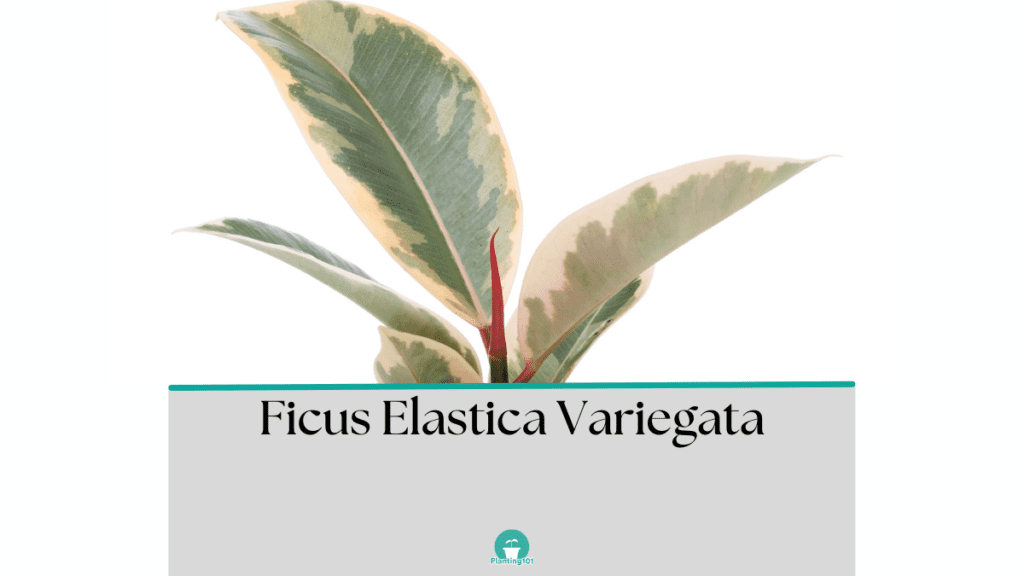
Rubber Tree Plant: Size
Rubber Tree Plant are large plants that can grow to 12 feet tall. You will need a heavy pot for your Rubber Plant so it doesn’t topple over.
Light
Rubber Tree Plant: Sun or Shade?
Rubber Tree Plant will thrive in a bright area with indirect sunlight (you need to filter the light). Too much shade will result in poor growth.
If you have an East facing window, your Rubber Plant can tolerate a few hours of direct morning sun. However, if you place your Rubber Plant in front of a West facing window, the direct sun from the afternoon sun will become too intense for your Rubber Plant. You will need to filter the afternoon sun with sheer blinds or sheer curtains.
If you place your Rubber Plant in front of a South facing window, the direct sun all day is also too intense for your Rubber Plant. The direct sunlight needs to be filtered.
Water
How Often Should You Water Your Rubber Tree Plant?
Rubber Tree Plant prefers soil that is not overly wet and not overly dry. It has moderate watering requirements. Your watering frequency will be highly dependent on the type of pot and how dry your home is. You should let the soil dry halfway before watering your Rubber Plant.
How Do You Know When to Water Your Rubber Tree Plant?
Rubber Tree Plant Water your Rubber Plant when the soil feels dry. The best way to tell when it’s time to water is by sticking your finger into the soil 1 inch deep. If the soil feels dry, then it’s time to water your Rubber Plant.
The frequency of watering will be dependent on the type of pot you have your Rubber Plant in. Unglazed pots like terracotta are porous and will dry up more quickly than if you have your Rubber Plant planted in plastic, metal or glazed ceramic pots. These pots don’t breathe so will retain moisture much longer. The environment will also affect how often you water your Rubber Plant.
Hot summer days will require more watering (even if your Rubber Plant is indoors) while cold, winter days will require less watering.
What Type of Water Should You Use When Watering Your Rubber Tree Plant?
Rubber Tree Plant can be watered with tap water but be mindful of the water temperature that you are using to water your Rubber Plant. Don’t use straight cold water from the tap to water your Rubber Plant.
Rubber Plant prefers cool water that is not hot and not cold. When you turn on the cold water from the faucet add a little bit of warm water. You can also get to this ideal temperature by filling a watering can or pitcher with water and leaving it out overnight until the water is at room temperature.
How Do You Make Sure There is Proper Drainage for Your Rubber Tree Plant?
Your Rubber Tree Plant needs proper drainage otherwise it might suffer from stem rot. To ensure proper drainage, make sure the pot has drainage holes at the bottom. After watering your plant, don’t let it sit in the puddle of water that has accumulated in the saucer. Empty out the water from the saucer.
Do You Need to Mist Your Rubber Tree Plant?
Yes, you need to mist your Rubber Tree Plant. Rubber Tree Plant is a native tropical plant that thrives in warm and humid conditions. Here are things you can do to increase indoor humidity.
- Mist your Rubber Plant twice a week with a spray bottle of water.
- Increase humidity by running the humidifier in the room.
- Keep the Rubber Plant in a saucer filled with water but make sure the pot is elevated with pot feet or pebbles.
Do You Need to Wipe the Leaves of Your Rubber Tree Plant?
You should occasionally wipe down the leaves of your Rubber Plant with a damp cloth. You can also use a dry duster to get the layer of dust off. By wiping the leaves of your Rubber Plant, this will ensure that you remove the layer of dust that has accumulated on the leaves overtime.
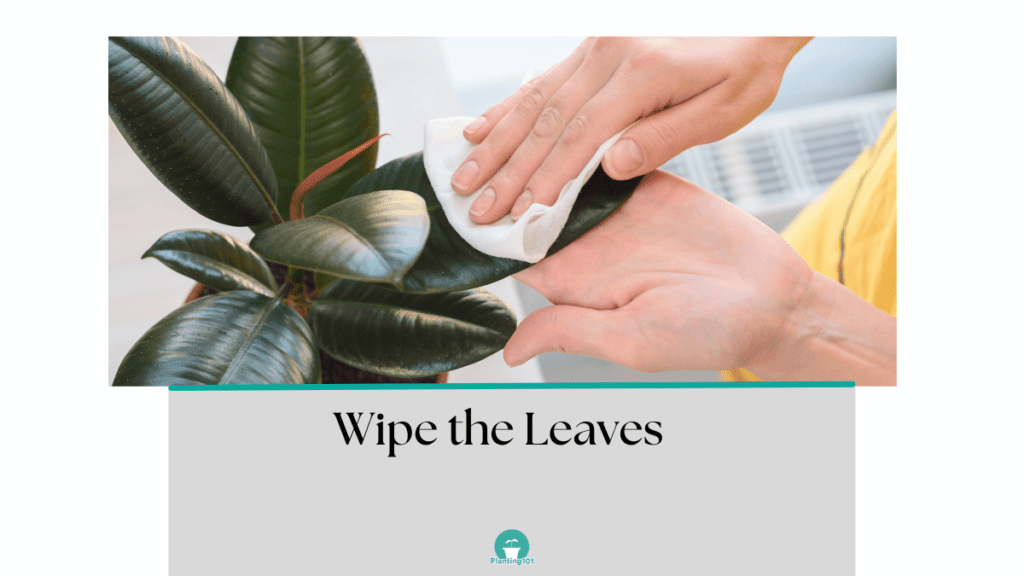
Soil
What Type of Potting Mix is Best for Your Rubber Tree Plant?
Rubber Tree Plant needs a well-draining, organic potting mix. You can buy premixed potting soil with organic fertilizers and beneficial microbes and mycorrhizal fungi.
It’s best to buy organic soil mixtures because non-organic soil mixtures often contain a higher concentration of fertilizer which can burn the roots of your plant. Non-organic soil mixtures are not generally suitable for houseplants.
How Do You Know When To Repot Your Rubber Tree Plant?
You will need to repot your Rubber Plant every year. Buy a larger pot, around 4 inches larger in diameter than the current pot. Make sure you buy a pot that has drainage holes at the bottom so water doesn’t accumulate and cause root rot and stem rot.
Your Rubber Plant can grow really big, stop repotting once you have reached optimal size. Repot Rubber Plant in a heavy pot so it doesn’t topple over.
Fertilizer
Do You Need to Fertilize Your Rubber Tree Plant?
Rubber Tree Plant will benefit from a once a month application of fertilizer. Apply fertilizer when it’s actively growing. Don’t feed in the Fall and Winter months when it’s dormant and not growing.
What Fertilizer Should You Use for Your Rubber Tree Plant?
Use organic fertilizers with a higher ratio of nitrogen content.
Propagation
How Do You Propagate Your Rubber Tree Plant?
Rubber Tree Plant is difficult to propagate. One way to propagate Rubber Plant is by air layering. However, know that it is tricky to do. Air layering your Rubber Plant is probably one of the only ways to get your Rubber Plant to grow new roots.
How to Air Layer Rubber Tree Plant
- Cut a stem 1/3 of the way, just below the node. Don’t cut more than a third of the stem. When you make the cut, wipe away any sap with a damp cloth.
- Prop open the cut with a toothpick and then apply rooting hormone on the cut and wrap it with moistened, sphagnum moss.
- Wrap the moss with plastic and tape it so it securely holds the moss but keep the top open so you have access to water the cutting.
- Keep up with the watering so the sphagnum moss is moist. In a month or so (or longer), there should be new roots.
- When the roots are around 2 inches or longer, you can cut off the stem from the parent plant and plant the cutting in a new pot.
Air layering Rubber Plant is a long process. You will need to be committed and be prepared to give time and patience to tackle air layering.
Common Problems
The most common problems that affect Rubber Tree Plants are scale, leaf drop and root rot.
Rubber Plant: Looks Wilted Even if the Soil is Wet
Problem: If your Rubber Plant looks wilted even if the soil is wet, there is a chance your Rubber Plant is suffering from root rot. The way to tell if its root rot is to pull the plant out and examine the roots. If the roots of your Rubber Plant plant look mushy and are gray to black in color, these are telltale signs of root rot.
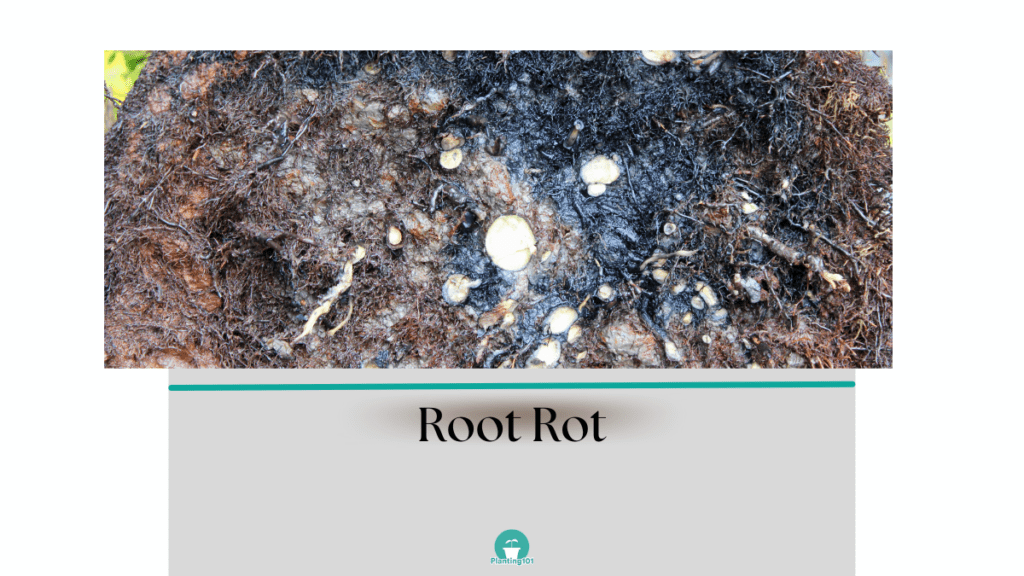
Cause: The cause of root rot is a result of wet soil due to overwatering or poor drainage. Root rot is caused by fungus and is a serious problem for your Rubber Plant.
Solution: When your Rubber Plant is afflicted with root rot the chance of survival is slim. Prevention is key, don’t overwater your Rubber Plant in the first place and make sure there is good drainage in the pot.
Rubber Plant: Lots of Leaves Dropping
Problem: When you see your Rubber Plant leaves dropping, that is a sign that something is wrong. It’s normal if one or two old leaves drop from your Rubber Plant but if a lot of leaves fall off all at once that is a sure sign that something is wrong.
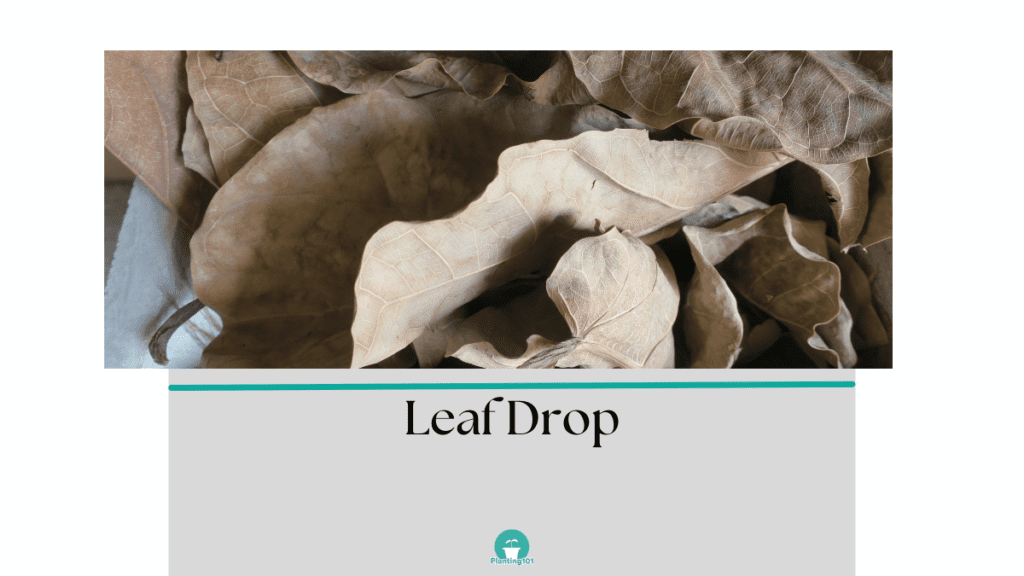
Cause: It’s possible your Rubber Plant leaves are dropping because it’s been overwatered. Moving your Rubber Plant to a new location where it is not happy can also cause the leaves of your Rubber Plant to drop. Your Rubber Plant can also drop leaves if it’s too cold.
Solution: You need to do a little bit of digging around. Did you overwater your Rubber Plant? What is the daytime and nighttime temperature of the room, is it suitable for your Rubber Plant? You can resolve the leaves dropping problem, once you pinpoint what is causing the leaves to drop from your Rubber Plant.
Rubber Plant: Lots of Small Brown Bumps on Leaves
Problem: If you see little brown bumps all over the leaves and stems of your Rubber Plant, that can be a sign of scale. Try picking the bumps off, if it’s easily removed then that’s a telltale sign of scale. The little bumps can also come in gray, yellow and black colors.

Cause: Scale is common on houseplants and is caused by scale insects.
Solution: You can get rid of scale by picking them off one by one. Or the easier way is to spray your Rubber Plant with insecticidal soap or horticultural oil.
Check out our article on how to make your own homemade pesticides using baby shampoo: How to Make Horticultural Oil and How to Make Insecticidal Soap
You May Also Be Interested In:
How to Take Care of Haworthia (infograph)
How to take Care of Ponytail Palm (Infograph)
How to take Care of Swiss Cheese Plant (Infograph)
Planting 101 participates in affiliate programs including Amazon Associates Program and may earn commission from qualifying purchases at no extra cost to you. Thank you for your support.

